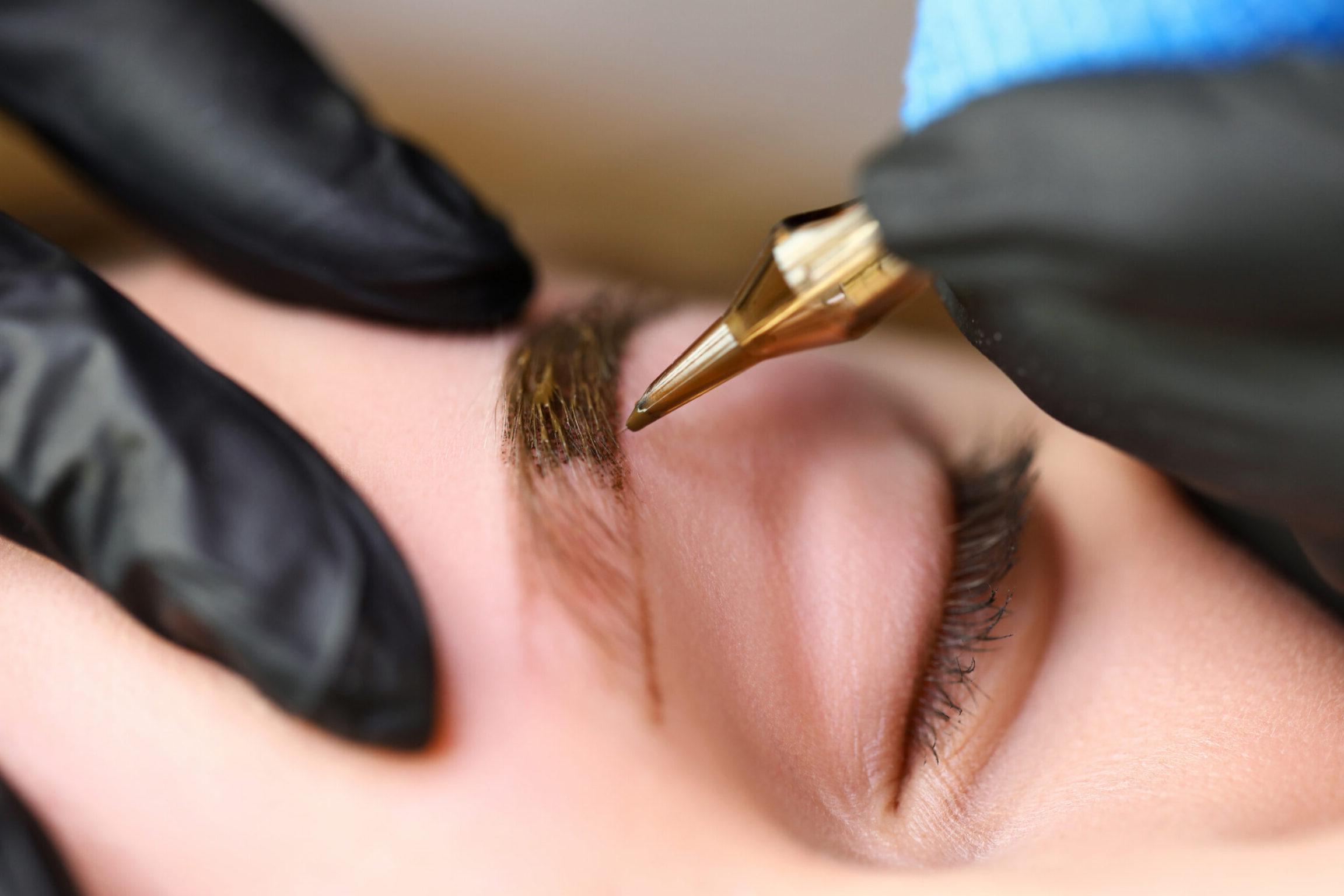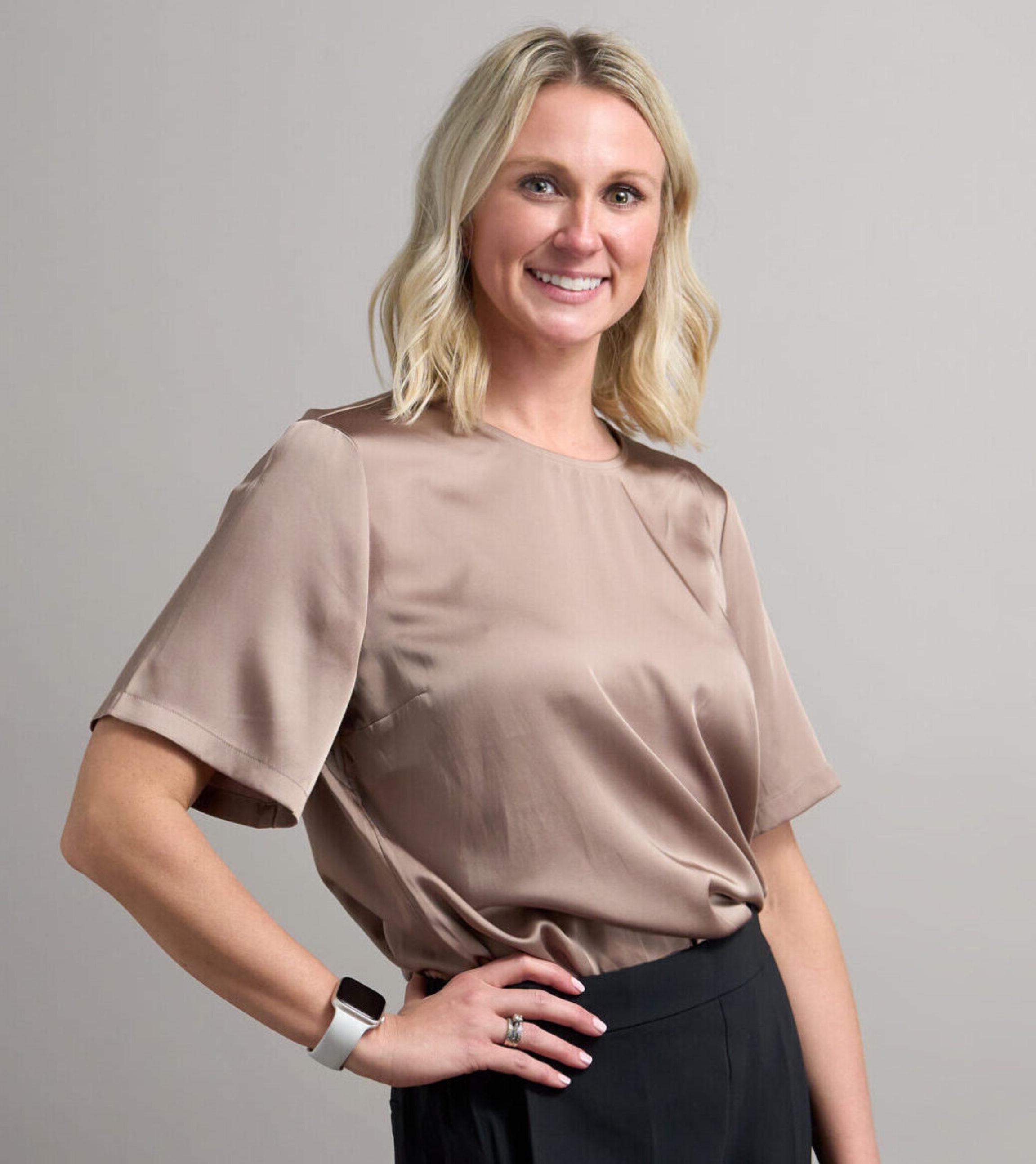Ultrasound-Guided Filler Injections
Our Providers Use Ultrasound Imaging To Make Treatments Safer & More Effective

Ultrasound-guided filler injections involve the use of a handheld ultrasound device to scan different areas of the face to identify both the location of blood vessels and how deep they are prior to the injection. This advanced technique provides a safer experience for patients and allows us to be more efficient and thorough with our injections by highlighting the ideal depth for filler placement.
How Do You Use Ultrasound For Injectables?
First, we apply ultrasound transmission gel to the skin to help conduct sound waves more effectively. Those controlled soundwaves are then sent down into the skin using our handheld ultrasound device, which relays the images to the mobile app that is connected to a phone or iPad. This allows us to see the area that we’re working with.
These soundwaves don’t cause damage; there are no long-term effects, and patients don’t feel them at all. They bounce off structures underneath the skin so we can see different layers based on the density of the structures. Denser structures like bone, teeth and cartilage will bounce off and show up as white.

How Does Ultrasound Prevent Dangerous Injections?
As certified providers, we have a fairly strong understanding of where everything is located anatomically in the face. Using ultrasound imaging gives us an even closer look at the underlying structures. We provide injections as safely as possible by knowing how deep each blood vessel is with a great degree of certainty.
Are There Specific Areas Where Ultrasound Is More Useful?
There are certain areas on the face that we know this technique to be very useful for. The main area of note is near the nasolabial folds. There is a distinct and large artery that runs right along the nose. Ultrasound allows us to locate that vessel and avoid it at all costs.
Another great way to leverage this technique is with non-surgical rhinoplasty. Blood supply to the nose is limited, so it is important to be able to preserve all of the blood vessels there. We use it right along the dorsal hump of the nose which helps us identify not just the sensitive arteries, but also all the additional nasal cartilage and bone irregularities.
What Happens If Filler Is Injected Into A Vein, Nerve Or Artery?
Injecting filler or Botox into the wrong place is a genuine cause for concern. In mild cases, it can result in discomfort, numbness and “blanching” (whitening of the tissue). In more serious situations, this can result in vascular occlusions which may progress to tissue necrosis if not addressed quickly.
This is another reason why we strongly urge individuals everywhere to only seek reputable, well-trained and experienced professionals to perform their treatments.
How Does Imaging Technology Improve The End Result?
Everyone learns anatomy in 2D – we all know where things are supposed to be when they’re flat on a textbook page. But life is in 3D and cosmetic injections are all about depth. We’re doing more than just not injecting into an area where there’s a blood vessel; we’re making the most of the space by knowing how deep to place certain fillers based on that patient’s anatomical variances. This extra step also allows us to identify existing filler in the specific layer that it is in to help plan the next treatment for layering.
What Treatments Can Ultrasound Be Used With?
We can use this technique on all injectables in the face and neck area, including (but not limited to) Botox, lip injections, liquid rhinoplasty, Kybella fat reduction, chin/jawline filler, undereye filler and nasolabial fold filler.

Should I Always Ask For Ultrasound At My Appointment?
Your provider should ask a series of important questions during your consultation, such as “have you had filler before” and “have you experienced complications in the past?” Your answers will help the provider decide if an ultrasound is necessary for greater safety. However, if you have rapport and experience with this specific injector, they may forgo ultrasound imaging simply because they already know your unique facial anatomy and the placement of the previous injections.
The majority of providers in the United States are not equipped or trained to use imaging technology for these types of treatments. Asking for it may result in a pretty quick “no.” This does not mean that other providers are dangerous or unqualified; they’re just lacking the resources necessary to make the most of your money and take your results and safety to the next level.



About The Author:
Adrienne Yanich, RN is one of Columbus, Ohio’s most sought-after injectables experts. She has been officially certified by the American Academy of Facial Aesthetics in injection anatomy and the ultrasound imaging injection technique. She has a wealth of experience providing incredible results with non-surgical treatments like Botox, laser therapies, Ultherapy and more.
Related Articles

Read More How Long After Filler Can You Sleep On Your Side?
How Long After Filler Can You Sleep On Your Side?
We advise patients to wait 3-5 days after their appointment before falling asleep on their side. Allowing time for the filler to settle is fundamental to achieving long-lasting and optimal results.

Read More How To Make Botox Last Longer
How To Make Botox Last Longer
Patients can improve overall skin health and extend the life of their Botox treatments by keeping consistent with their treatments, skincare routine and post-treatment instructions.

Read More Lessons Learned Along The Way
Lessons Learned Along The Way
Your favorite providers offer their most impactful aesthetic and functional medicine discoveries since joining Donaldson.













